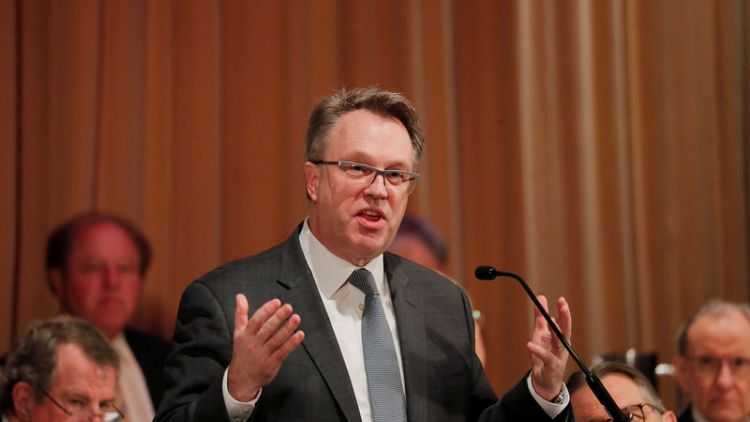By Trevor Hunnicutt
NEW YORK (Reuters) - Policymakers need to add stimulus early to deal with too-low inflation when rates are near zero and cannot wait for economic disaster to unfold, a Federal Reserve policymaker said on Thursday.
In a speech read as a strong argument in favour of quick and aggressive action by the Fed to cut rates this month, New York Fed President John Williams said that one of the lessons from his research is that, when rates and inflation are low, policymakers cannot afford to keep their "powder dry" and wait for potential economic problems to materialize.
He said that is especially true with neutral rates that would neither restrict nor accelerate the U.S. economy "around half a percent." The Fed's policy rate is currently in a range of 2.25-2.50%.
"It's better to take preventative measures than to wait for disaster to unfold," Williams said in a speech he delivered at a central banking conference here. "When you only have so much stimulus at your disposal, it pays to act quickly to lower rates at the first sign of economic distress."
Short-term bond yields dived on the remarks, with 2-year Treasuries <US2YT=RR> falling below 1.78% from over 1.81% seconds earlier. Interest-rate futures spiked, pricing in higher chances of a larger rate cut sooner, and broad U.S. stock indexes traded at their highs for the day.
In recent weeks, Fed policymakers have identified a host of concerns they think could end what is now the longest U.S. economic expansion on record. Chief among those concerns include a U.S.-China trade war denting business confidence, a global manufacturing slowdown and inflation below the Fed's target of 2% a year.
Williams, who will vote on rates at the Fed's next policy meeting on July 30-31, sounded particularly concerned about inflation, with the Fed's preferred measure of prices gaining 1.6% a year now.
"People may start to expect it to stay that way, creating a feedback loop, pushing inflation further down over the longer term," Williams said. "The lower average level of inflation translates into a lower level of interest rates cuts available during a downturn, making it even harder for policymakers to achieve their goals."
Taking quick action to cut rates in the face of "adverse economic conditions" and keeping rates lower for longer, Williams said, "should vaccinate the economy and protect it from the more insidious disease of too low inflation."
Other Fed policymakers seem less sure. Kansas City Fed President Esther George, for instance, on Wednesday suggested she might be willing to support a cut, but only if looming economic risks materialize.
(Reporting by Trevor Hunnicutt; Editing by Chizu Nomiyama)



